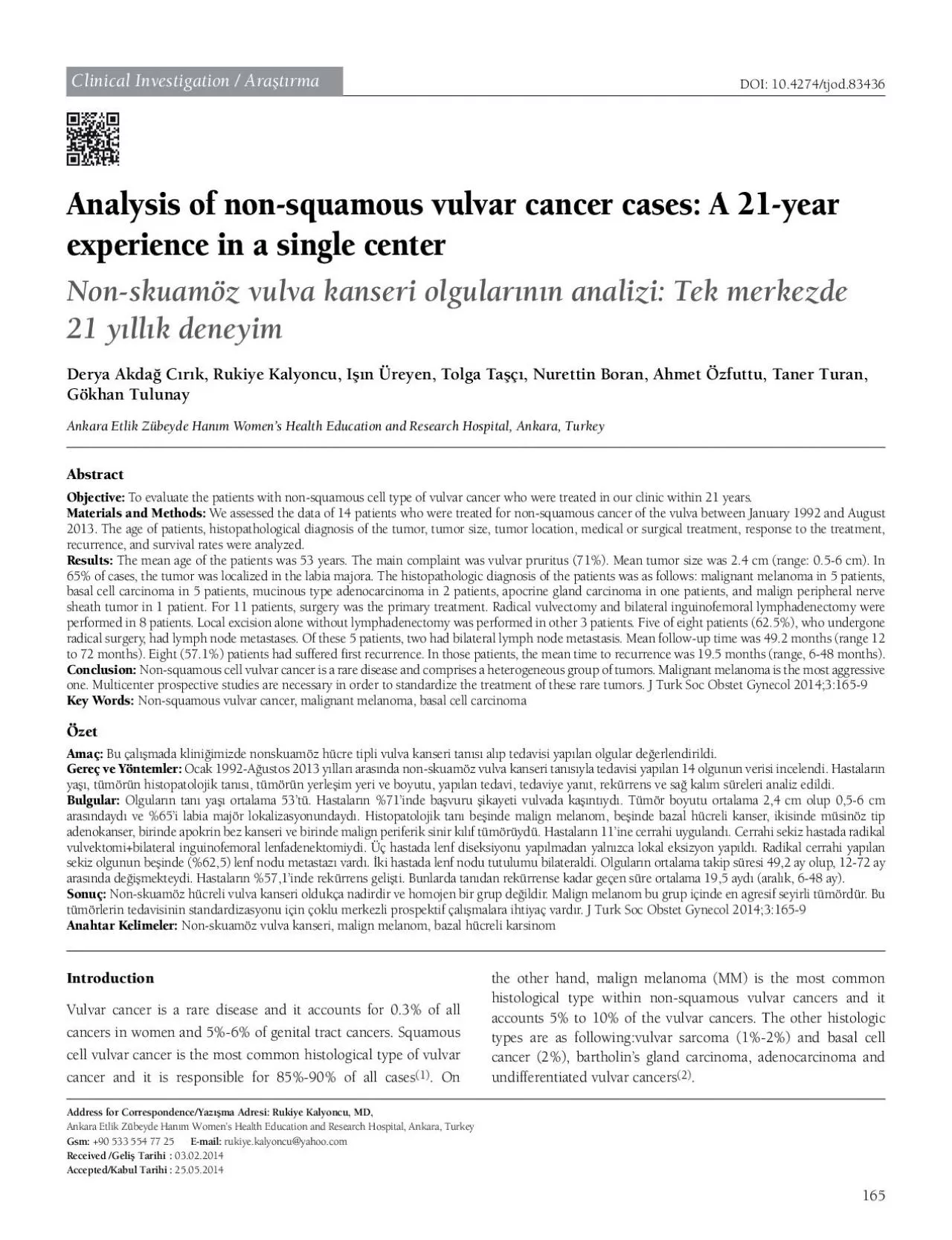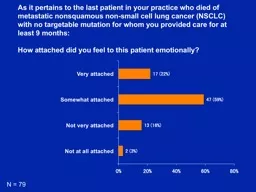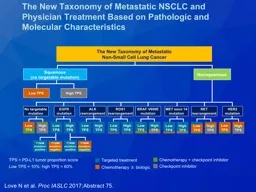PDF-Analysis of nonsquamous vulvar cancer cases A 21year Nonskuamz v
Author : willow | Published Date : 2022-08-20
165DOI 104274tjod83436 Address for CorrespondenceYaz3130ma Adresi Clinical Investigation Ara31t30rma hypertensive diabetic obese heavy smoker and chronic immunosuppressive
Presentation Embed Code
Download Presentation
Download Presentation The PPT/PDF document "Analysis of nonsquamous vulvar cancer ca..." is the property of its rightful owner. Permission is granted to download and print the materials on this website for personal, non-commercial use only, and to display it on your personal computer provided you do not modify the materials and that you retain all copyright notices contained in the materials. By downloading content from our website, you accept the terms of this agreement.
Analysis of nonsquamous vulvar cancer cases A 21year Nonskuamz v: Transcript
Download Rules Of Document
"Analysis of nonsquamous vulvar cancer cases A 21year Nonskuamz v"The content belongs to its owner. You may download and print it for personal use, without modification, and keep all copyright notices. By downloading, you agree to these terms.
Related Documents














